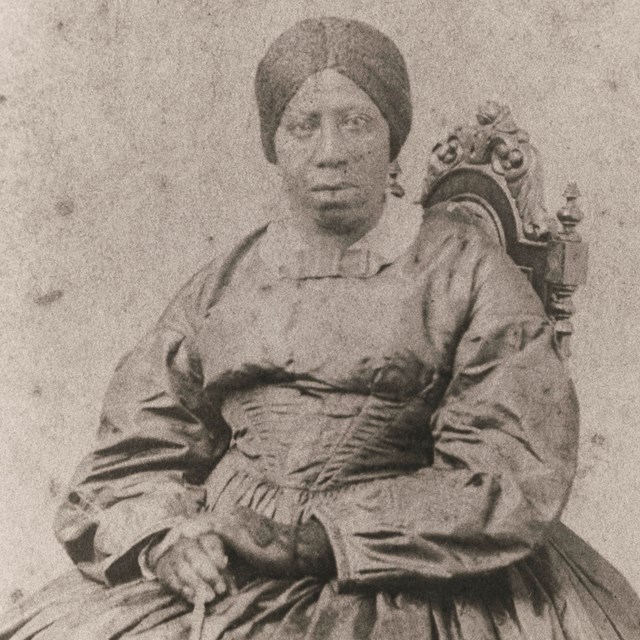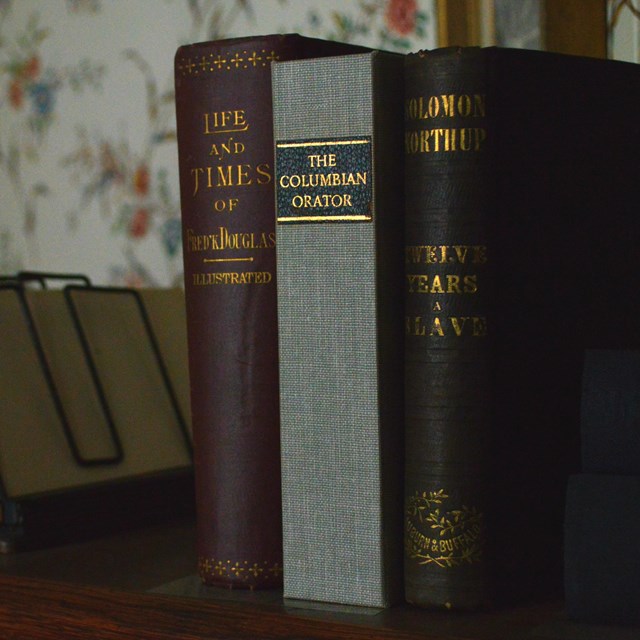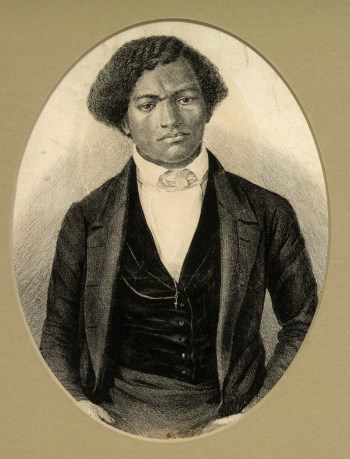
NPS / FRDO 2169 Slavery and EscapeFrederick Augustus Washington Bailey was born into slavery on the Eastern Shore of Maryland in February 1818. Enslavers often ripped apart or fractured family relationships. Young Frederick barely knew his mother, who died when he was a young child on a distant forced labor camp. He never knew his father. When he turned eight years old, his enslaver forced him to work for a family in Baltimore. At an early age, Frederick realized there was a connection between literacy and freedom. Not allowed to attend school, he taught himself to read and write in the streets of Baltimore. At twelve, he bought a book called The Columbian Orator. It was a collection of revolutionary speeches, debates, and writings on natural rights. When Frederick was fifteen, his enslaver sent him back to the Eastern Shore to labor as a fieldhand. Frederick rebelled intensely. He educated other enslaved individuals, physically fought back against a "slave-breaker," and attempted to seize his freedom through a bold, but ultimately unsuccessful plan. Frustrated, his enslaver returned him to Baltimore. This time, Frederick met a young free Black woman named Anna Murray. Anna Murray used her money to buy him a train ticket, risking her own safety to help him seize his freedom. On September 3, 1838, with the ticket in hand, he boarded a northbound train dressed as a sailor. In less than 24 hours, Frederick arrived in New York City. His lifelong search for freedom was well underway. 
NPS The Abolitionist MovementAfter seeking freedom, Frederick and Anna were married. They decided that with the human traffickers in New York City, it was not a safe place for Frederick, so they settled in New Bedford, Massachusetts. There, they adopted the last name "Douglass" and started their family. The family grew to include five children: Rosetta, Lewis, Frederick, Jr., Charles, and Annie.
After finding employment as a laborer, Douglass began to attend abolitionist meetings and speak about his experiences. He soon gained a reputation as an orator, and was paid to speak about slavery by the Massachusetts Anti-Slavery Society. This took him on speaking tours across the North and Midwest. Douglass's fame as an orator increased as he traveled. Still, some of his audiences suspected he had never been enslaved. In 1845, he published his first autobiography, The Narrative of the Life of Frederick Douglass, to lay those doubts to rest. The narrative gave a clear record of names and places from his enslavement. To avoid being captured and re-enslaved, Douglass traveled overseas. For almost two years, he gave speeches and sold copies of his narrative in England, Ireland, and Scotland. When abolitionists offered to purchase his freedom, Douglass accepted and returned home to the United States legally free. The Douglass family relocated to Rochester, New York. In Rochester, Douglass took his work in new directions. He embraced the women's rights movement, helped people on the Underground Railroad, and supported anti-slavery political parties. Once an ally of William Lloyd Garrison and his followers, Douglass started to work more closely with Gerrit Smith and John Brown. He bought a printing press and ran his own newspaper, The North Star. In 1855, he published his second autobiography, My Bondage and My Freedom, which expanded on his first autobiography and challenged racial segregation in the North. 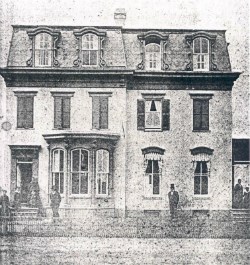
NPS / FRDO 11001 Civil War and ReconstructionIn 1861, the nation erupted into civil war over the issue of slavery. Frederick Douglass worked tirelessly to make sure that emancipation would be one of the war's outcomes. He recruited Black men to fight in the U.S. Army, including two of his own sons, who served in the famous 54th Massachusetts Volunteer Infantry. When Black troops protested they were not receiving pay and treatment equal to that of white troops, Douglass met with President Abraham Lincoln to advocate on their behalf. As the Civil War progressed and emancipation seemed imminent, Douglass intensified the fight for equal citizenship. He argued that freedom would be empty if the formerly enslaved were not guaranteed the rights and protections of American citizens. A series of postwar amendments sought to make some of these tremendous changes. The 13th Amendment (ratified in 1865) abolished slavery, the 14th Amendment (ratified in 1868) granted national birthright citizenship, and the 15th Amendment (ratified in 1870) stated nobody could be denied voting rights on the basis of race, skin color, or previous servitude. In 1872, the Douglasses moved to Washington, D.C. There were multiple reasons for their move. Douglass had been traveling frequently to the area ever since the Civil War. All three of their sons already lived in the federal district, and the old family home in Rochester had burned. A widely known public figure by the time of Reconstruction, Douglass started to hold prestigious offices, including assistant secretary of the Santo Domingo Commission, legislative council member of the D.C. Territorial Government, board member of Howard University, and president of the Freedman's Bank. 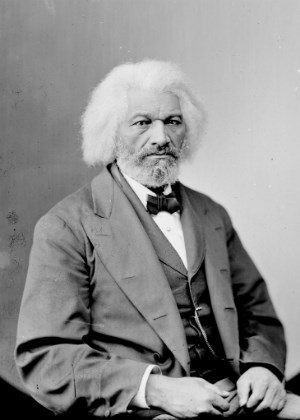
Library of Congress Post-Reconstruction and DeathAfter the fall of Reconstruction, Frederick Douglass managed to retain high-ranking federal appointments. He served under five presidents as U.S. Marshal for D.C. (1877-1881), Recorder of Deeds for D.C. (1881-1886), and Minister Resident and Consul General to Haiti (1889-1891). Significantly, he held these positions at a time when violence and fraud severely restricted Black political activism. On top of his federal work, Douglass kept a vigorous speaking tour schedule. His speeches continued to agitate for racial equality and women's rights. In 1881, Douglass published his third autobiography, The Life and Times of Frederick Douglass, which took a long view of his life's work, the nation's progress, and the work left to do. Although the nation had made great strides during Reconstruction, there was still injustice and a basic lack of freedom for many Americans due to "Jim Crow" laws (so-called after a Black character in minstrel shows).
Tragedy struck Douglass's life in 1882 when Anna Murray Douglass died from a stroke. He remarried in 1884 to Helen Pitts, an activist and the daughter of former abolitionists. The marriage stirred controversy, as Helen was white and twenty years younger than him. Part of their married life was spent abroad. They traveled to Europe and Africa in 1886-1887, and they took up temporary residence in Haiti during Douglass's service there in 1889-1891.
On February 20, 1895, Douglass attended a meeting for the National Council of Women. He returned home to Cedar Hill in the late afternoon and was preparing to give a speech at a local church when he suffered a heart attack and passed away. Douglass was 77. He had remained a central figure in the fight for equality and justice for his entire life. View the chronology of the life of Frederick Douglass here.
|
Last updated: March 2, 2024

